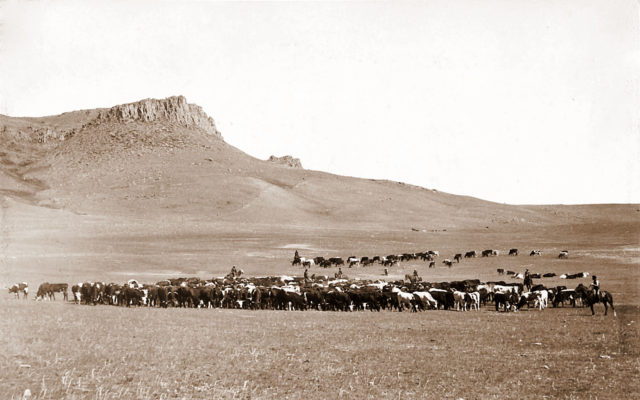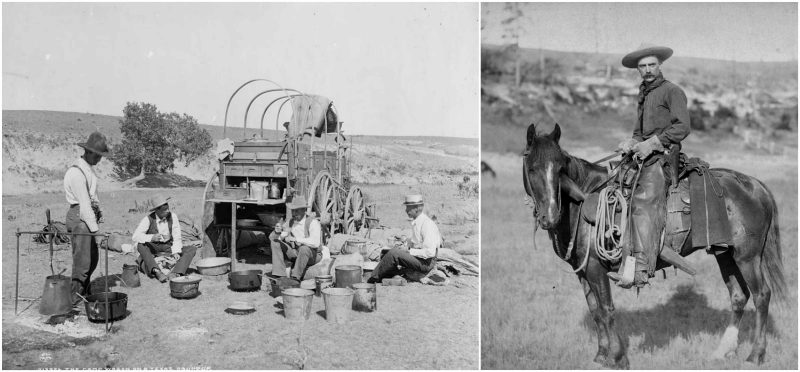There is hardly a movie genre that captivated so many for so long the way ‘Western’ did; bringing back to life some of the lost traditions of the frontier along with its ruggedness and outlaws. Americans especially loved the old west, for its gunfights, cowboys, stagecoach robberies, and clashes with Indians.
The flurry of western movie production perpetuated the American romance with the Wild West and doing so went off course with fewer facts and more fictional conjuring. Regardless of the vision of the Wild West one may have, the old west was nothing like what it has been portrayed on a cinema screen for the better part of last century. Following are some of the facts about the life on the frontier that is in sheer contrast with what we envisioned all these years.
Smelly Cowboys

This may come to many as a shock that Native Americans were absolutely flabbergasted to see the hygiene of the new western emigrants; they were disgusted. Days were long, very long if you put in the equation the scorching heat. Unlike the Natives, emigrants wore long and thick clothing which obviously made things worse for them while travelling in high temperatures.
Despite the apparent hardships the people at the time had no infatuation with regular bathing or cleaning, most men and women went months without taking a bath, and they seemed fine with it. The natives were absolutely repulsed at this, as this was a strange behaviour for them. Native Americans had become accustomed to the elements and learnt to live with the hardships, and most of them washed regularly; far more frequently than the emigrants. Now try to find that in western movies.
Water was sold like Gold

While Natives were laughing their heads off on the smelly cowboys, the incoming people faced the struggle of life and death. Unfamiliar with the terrain the people moving to the old west feared death by thirst and starvation.
This created a whole new business industry; many ‘entrepreneurs’ took gallons of waters from the other side to sell it to the travelers and locals for high prices. The cost of a mere cup of water started from one dollar, five dollars and in some places went as high as one hundred dollars. To put this in perspective, at the time a pound of meat cost approximately one cent or even less in some places. Drinking water without a doubt was as expensive in the old west as gold.
Traffic Jams

Many of us will associate the term traffic jam with modern lifestyle; in fact, the good old west had its fair share of traffic jams on its trails. That vision, that western movies gave us of a single wagon slowly treading on a rugged terrain is just that; a vision.
In reality, the people moving towards frontier travelled in groups of hundreds of wagons on dirt roads. This inevitably created massive clouds of dust to even turn the day into night (or a nightmare) for those poor folks lurking at the back. There was no chance of overtaking as the trails were mostly narrow and could only have enough space of one and at most two medium sized wagons. Most of the travellers packed a pair of goggles to avoid being devastated by the thick dust clouds and looked like a freshly unearthed mummy by the time they reached their destination.
Camels in the West

Another fact which was totally ignored by the western filmmakers was the presence of camels in 19th century Wild West. The affair started in the early 1800’s when American authorities seriously took notice of the notion that camels could easily adapt the harsh western conditions and could bring some prosperity in terms of carrying and food as well. In 1843 US camel corps was formed after authorities imported some sixty-six healthy camels from Egypt and Morocco.
The move largely proved to be a success and the imported giants quickly acclimated themselves with western conditions and bred well. However during and after the American Civil War a large number of camels were either killed or ran to the wilderness. Some of the camels were captured by the circus for shows and carrying stuff. The last time anyone saw a camel in the west was in Texas in 1941.
No Cowboy Hats
The single most recognizable symbol of the old west constructed and perpetuated by the movies is the cowboy hat. In reality, the cowboys at the time did not wear such headgear, purely because it was not practical and did not go with their overall rough and rugged attire. Travelling in heat, fighting with nature, starving for days and searching for every drop of water; the emigrants had no view of their ‘wardrobe’ especially when they were literally fighting for their lives.
The Peaceful West

Another injustice that movies did to those who lived in the west all through the 19th century was the fact that they were all portrayed as either gunslingers, land grabbers or mere sheep who worshipped the powerful. In reality, the situation in the old west was not that bad, actually less violent then the other parts of America. The rate of homicide was significantly low; there were no choreographed gun-bouts, no mass hangings; to put it in one term ‘west was never the way you may remember from the western movies’.
Friendly Natives

Native Americans were nothing like the barbarians and killers that western movies portray them as; they were rather clean, thinking, spiritual and mostly peaceful people, much like any community of humans. They were surely more civilized from the new settlers, more hygiene conscious for sure.
Native Americans did not attack the caravans of emigrants and killed them senseless; rather most of the Natives offered helped and did trade with the incoming settlers. The circle formation of wagons in the nights that Western got ‘right’ (perhaps the only thing they got right about the west) was not a defensive measure against attacking Native tribes; it was rather a move to stop the animals from wandering off and leaving people helpless in the wilderness.
